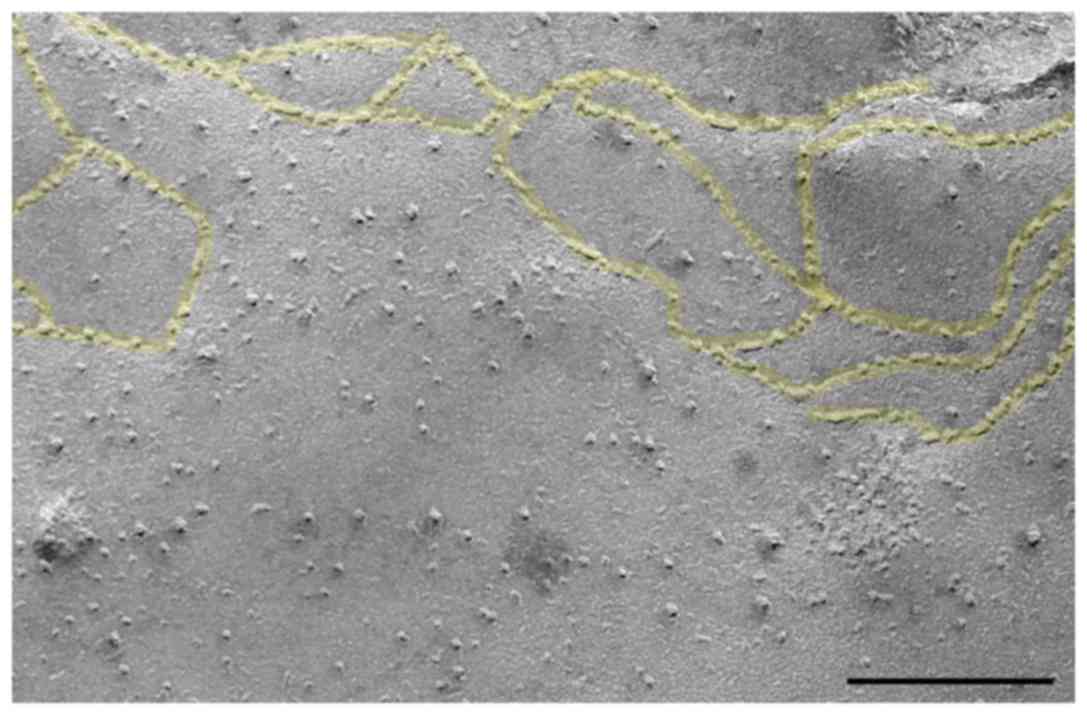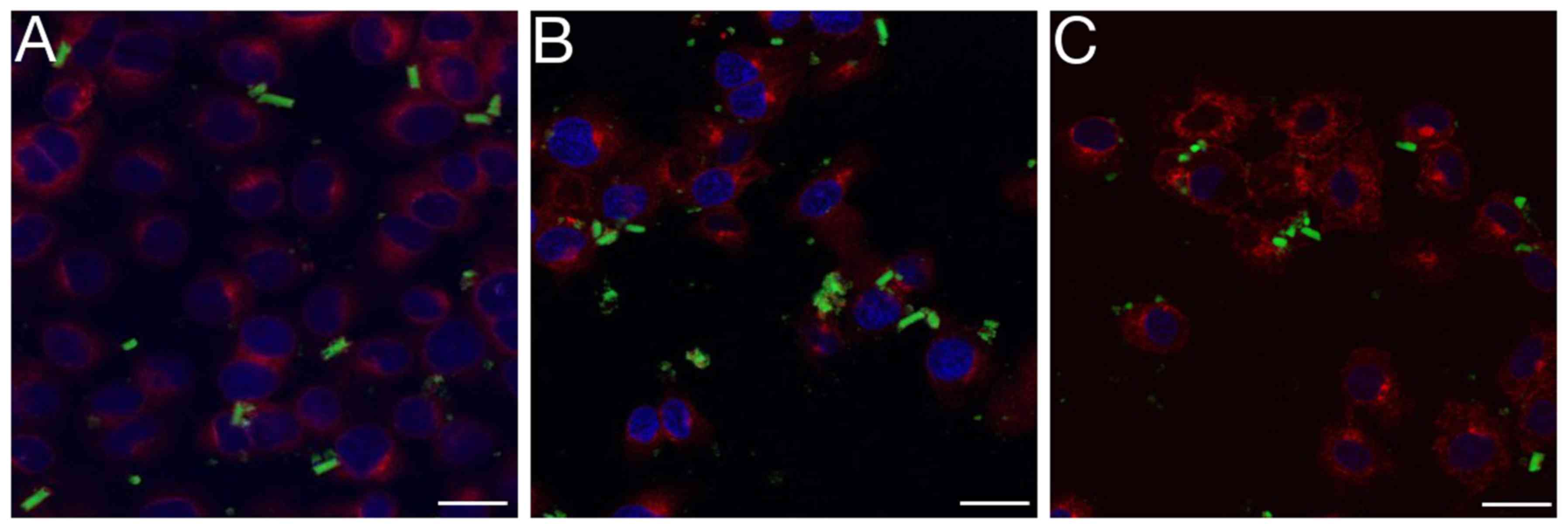Silica nanoparticles of microrods enter lung epithelial cells
- Authors:
- Published online on: June 26, 2018 https://doi.org/10.3892/br.2018.1117
- Pages: 156-160
-
Copyright: © Tschernig et al. This is an open access article distributed under the terms of Creative Commons Attribution License.
Metrics:
Total
Views: 0 (Spandidos Publications: | PMC Statistics:
)
Total PDF Downloads: 0 (Spandidos Publications: | PMC Statistics:
)
Abstract
A novel type of microparticle has recently been engineered. It consists of amorphous silica nanoparticles and has a corncob‑like shape. It has already been demonstrated in vivo that alveolar macrophages in the lung are able to engulf this particulate carrier and that it also functions successfully as a gene delivery system. This subsequently raises the question as to whether epithelial cells may also be possible targets for these microrods. For this purpose, the alveolar epithelial cell line A549 was used presently. The epithelial character of these confluent cells was documented by the presence of tight junctions using a freeze‑fracture technique and transmission electron microscopy. A toxic effect of the particles incubated with these cells was largely excluded. The interaction of the microparticles with the epithelial cells was observed using confocal microscopy and live cell imaging. Interestingly, the particles entered the epithelial cells within hours. After 1 day, the intracellular particles began to disaggregate and release the silica nanoparticles. Thus, even epithelial cells may serve as targets for this novel carrier and gene delivery system. This is particularly important since safe and effective gene delivery remains an unsolved problem. In addition, delivery of anti‑cancer and anti‑infective drugs may be an application of this novel particulate carrier.












